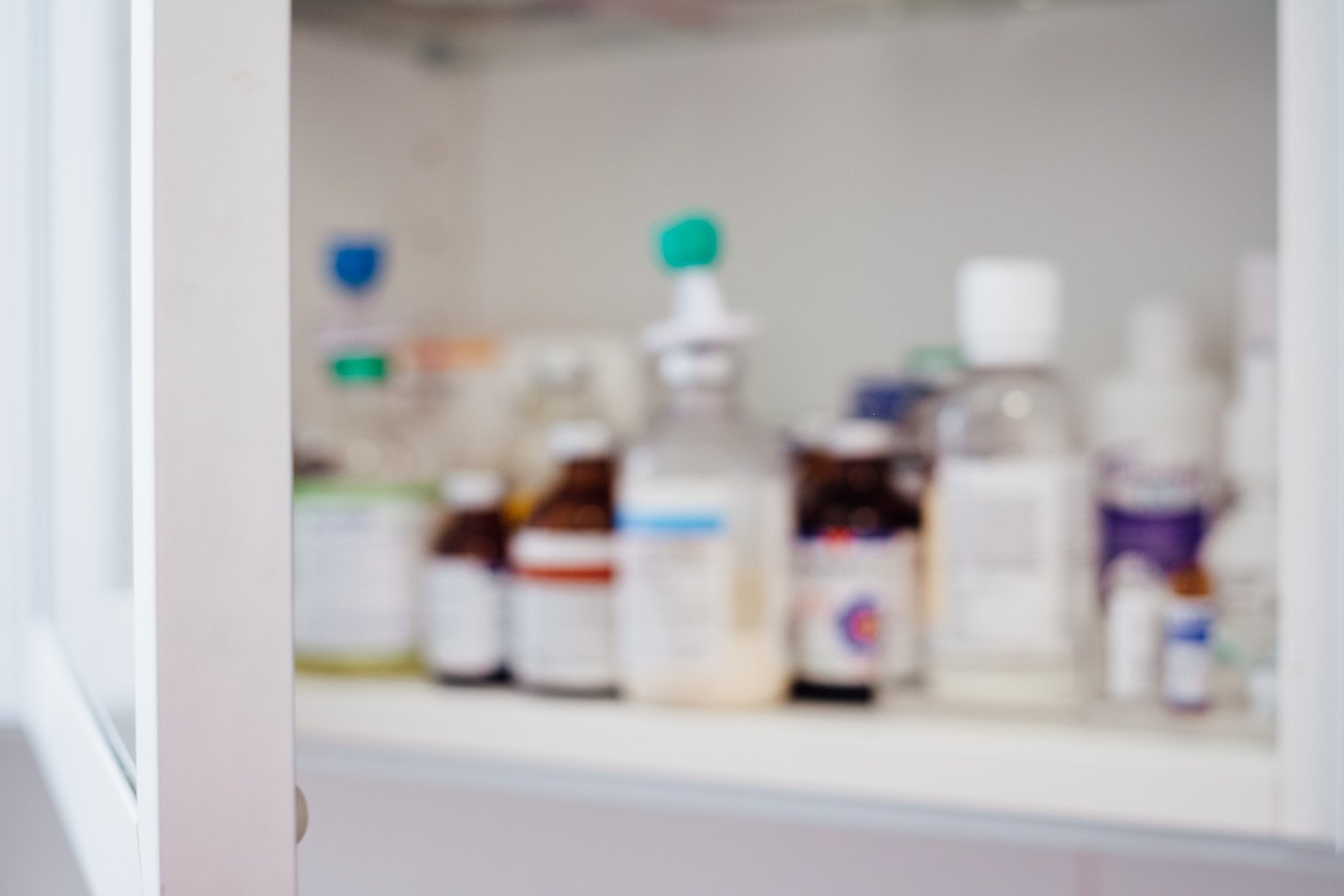If you’re running a pharmacy business and want to reach more customers online, utilizing Google Ads can be a game-changer. This article will provide you with valuable insights on how to effectively use Google Ads for pharmacy marketing. From targeted keyword selection to compelling ad copy, you’ll learn practical strategies that will help you connect with potential customers searching for pharmaceutical products and services. By tapping into the expertise of High Priority Marketing, you’ll have access to their knowledge, experience, and proven strategies for Google Ads success. Get ready to take your pharmacy marketing to the next level!
Understanding Google Ads
What is Google Ads?
Google Ads is an online advertising platform developed by Google. It allows businesses to display advertisements on Google’s search engine results pages (SERPs) and across its vast network of partner websites. With Google Ads, businesses can reach their target audience by displaying ads that are relevant to their customers’ search queries.
How does Google Ads work?
Google Ads operates on a pay-per-click (PPC) model, which means that advertisers only pay when users click on their ads. Advertisers bid on specific keywords related to their products or services, and their ads are displayed to users who search for those keywords. The auction-based system takes into account the advertiser’s bid, keyword relevancy, ad quality, and other factors to determine the ad’s placement on the SERPs.
Why use Google Ads for pharmacy marketing?
Google Ads can be a powerful tool for pharmacy marketing due to its wide reach and targeting capabilities. By utilizing Google Ads, pharmacies can effectively promote their products and services to a relevant audience. With the ability to target specific keywords, locations, demographics, and even interests, pharmacies can reach potential customers who are actively searching for healthcare products or services, increasing the likelihood of conversion and driving valuable traffic to their website.
Setting Up a Google Ads Account
Creating a Google Ads account
To get started with Google Ads, you need to create an account. Visit the Google Ads website and click on the “Start Now” button. Follow the step-by-step instructions to create a new account. You will need to provide some basic information, such as your business name, website URL, and billing details.
Choosing the right campaign type
Once your account is set up, it’s time to choose the right campaign type for your pharmacy marketing. Google Ads offers various campaign types, including search campaigns, display campaigns, shopping campaigns, and video campaigns. Consider your specific marketing objectives and choose the campaign type that aligns best with your goals.
Defining your advertising goals
Before launching your pharmacy marketing campaign, it’s important to define your advertising goals. Are you looking to increase brand awareness, drive website traffic, or boost sales? Clearly defining your goals will help you tailor your campaign settings, ad copy, and targeting options to achieve the desired outcomes.
Setting a budget for your pharmacy marketing campaign
Setting a budget is a crucial step in managing your Google Ads campaign. Consider your advertising goals, competition in the pharmacy industry, and your available resources when determining your budget. It’s important to allocate enough funds to reach your target audience effectively while ensuring a positive return on investment (ROI). Monitor your campaign’s performance regularly and make adjustments to your budget as needed to optimize results.
Keyword Research and Selection
Identifying relevant keywords for pharmacy marketing
Keyword research is essential for optimizing your pharmacy marketing campaigns. Start by brainstorming a list of relevant keywords related to your pharmacy services and products. Consider common terms used by customers when searching for healthcare products or services. Additionally, research your competitors to identify keywords they are targeting successfully.
Using keyword research tools
To streamline the keyword research process, utilize keyword research tools such as Google Keyword Planner, SEMrush, or Moz Keyword Explorer. These tools provide valuable insights into search volume, competition level, and keyword suggestions. Use these tools to identify high-potential keywords that align with your pharmacy marketing goals.
Evaluating keyword competition
When selecting keywords for your campaigns, it’s important to evaluate the competition level. Highly competitive keywords may require a larger budget and more strategic planning to rank higher on the SERPs. Consider targeting a mix of high-volume, competitive keywords, and long-tail keywords with lower competition to maximize your reach and optimize your budget.
Selecting high-converting keywords for your campaigns
While search volume and competition are important factors to consider, prioritize selecting keywords that are most likely to convert into customers. Focus on keywords that have commercial intent and indicate a user’s readiness to make a purchase or take action. Selecting high-converting keywords will help you attract valuable traffic and improve your pharmacy marketing campaign’s overall performance.
Creating Effective Ad Copy
Crafting compelling headlines
The headline of your Google Ads is the first thing users see when your ad appears on the SERPs. It’s essential to craft compelling headlines that capture attention and entice users to click on your ad. Use action-oriented language, include relevant keywords, and highlight unique selling propositions to create engaging headlines.
Writing persuasive ad descriptions
The ad description provides an opportunity to showcase your pharmacy’s unique offerings and benefits. Clearly communicate the value proposition of your products or services in a persuasive manner. Use persuasive language, highlight promotions or special offers, and include a strong call-to-action to encourage users to take the desired action.
Including relevant keywords in your ad copy
To improve the relevance of your ads and increase their visibility, include relevant keywords in your ad copy. Incorporate keywords naturally into your headlines, descriptions, and display URLs. This not only helps your ads rank higher on the SERPs but also makes them more appealing and targeted to users searching for specific terms.
Using ad extensions to enhance your pharmacy marketing ads
Ad extensions are additional pieces of information, such as phone numbers, links to specific pages on your website, or location information, that are displayed alongside your ad. Utilize ad extensions to enhance your pharmacy marketing ads and provide more relevant information to users. Ad extensions can improve ad visibility, convey more value to potential customers, and drive higher click-through rates.
Optimizing Landing Pages
Designing user-friendly and mobile-responsive landing pages
When users click on your ads, they should be directed to a landing page that is user-friendly and mobile-responsive. Design landing pages with a clean layout, intuitive navigation, and clear calls-to-action. Optimize your landing pages for mobile devices to ensure a seamless user experience across all devices.
Ensuring fast loading times for better user experience
Load times can significantly impact user experience and the success of your pharmacy marketing campaigns. Ensure that your landing pages load quickly by optimizing images, minimizing server requests, and leveraging caching techniques. Fast loading times not only improve user satisfaction but also contribute to better ad performance and higher conversion rates.
Including relevant information and call-to-action on landing pages
Your landing pages should provide users with relevant information about your pharmacy’s products or services. Clearly communicate key benefits and unique selling propositions. Include a strong and visible call-to-action that prompts users to take the desired action, such as making a purchase or contacting your pharmacy.
Implementing tracking tools to measure conversions
To measure the success of your pharmacy marketing campaigns accurately, it’s important to implement tracking tools, such as Google Analytics or Google Ads conversion tracking. Set up conversion tracking to monitor the actions visitors take on your website, such as making a purchase or filling out a contact form. This data will help you evaluate the effectiveness of your campaigns and make data-driven decisions to optimize performance.
Bidding Strategies and Budget Optimization
Understanding different bidding strategies
Google Ads offers various bidding strategies to optimize your pharmacy marketing campaigns. Common bidding strategies include manual cost-per-click (CPC), automated bidding, target return on ad spend (ROAS), and cost-per-acquisition (CPA) bidding. Each strategy has its advantages and considerations. Understand the pros and cons of different bidding strategies to choose the one that aligns with your advertising goals and budget.
Setting bid adjustments for target locations and demographics
Bid adjustments allow you to increase or decrease your bids based on specific targeting criteria, such as locations, demographics, or devices. Analyze your campaign’s performance data and adjust your bids accordingly to maximize your campaign’s reach and return on investment. For example, you may want to increase bids for highly valuable locations or specific audience segments that are more likely to convert.
Optimizing your pharmacy marketing budget for maximum ROI
Budget optimization is crucial to ensure you allocate your advertising budget effectively and achieve maximum return on investment. Continuously monitor your campaign’s performance, identify top-performing keywords, and allocate a larger portion of your budget toward them. Pause underperforming keywords or ad groups to optimize your budget allocation and get the most out of your pharmacy marketing campaigns.
Monitoring and adjusting your bids based on performance
Regularly monitor your campaign’s performance and make adjustments to your bids based on key metrics and performance indicators. Analyze metrics such as click-through rate (CTR), conversion rate, cost-per-click (CPC), and return on ad spend (ROAS) to identify areas for improvement. Increase bids for keywords or ad groups that are performing well and decrease bids for those that are not generating the desired results.
Monitoring and Analyzing Campaign Performance
Tracking key metrics and KPIs
Monitoring key metrics and key performance indicators (KPIs) is crucial to assessing the effectiveness of your pharmacy marketing campaigns. Track metrics such as click-through rate (CTR), conversion rate, average position, impression share, and cost-per-click (CPC). Regularly analyze these metrics to gain insights into your campaign’s performance and areas for improvement.
Using Google Ads reports and analytics
Google Ads provides robust reporting and analytics features to help you analyze the performance of your pharmacy marketing campaigns. Utilize Google Ads reports to gain deeper insights into your campaign’s performance, identify trends, and make data-driven decisions. Customize reports to track specific metrics and compare performance over time.
Analyzing conversion rates and cost-per-acquisition
Conversion rate and cost-per-acquisition (CPA) are essential metrics to evaluate the success of your pharmacy marketing campaigns. Analyze your conversion rate to understand how effectively your ads are driving desired actions, such as purchases or form submissions. Calculate your CPA to determine the cost of acquiring a new customer. Continuously analyze and optimize these metrics to improve your campaign’s performance and maximize ROI.
Making data-driven decisions to improve campaign performance
Data-driven decision-making is crucial to improving the performance of your pharmacy marketing campaigns. Analyze the data collected from your campaigns to identify trends, insights, and opportunities for optimization. Adjust your targeting options, bidding strategies, ad copy, and landing pages based on the data to improve your campaign’s effectiveness and drive better results.
Ad Extensions for Pharmacy Marketing
Adding location extensions to promote nearby pharmacies
Location extensions allow you to display your pharmacy’s address, phone number, and a map marker alongside your ad. By utilizing location extensions, you can promote nearby pharmacies to potential customers searching for healthcare products or services in their area. This ad extension is particularly beneficial for local pharmacy marketing.
Including call extensions for easy customer contact
Call extensions enable users to directly call your pharmacy with a simple tap on your ad. By including call extensions in your pharmacy marketing ads, you make it convenient for potential customers to contact your pharmacy and inquire about products or services. This ad extension can improve engagement and drive valuable phone leads.
Utilizing sitelink extensions to showcase specific products or services
Sitelink extensions allow you to include additional links to specific pages on your website directly in your ad. Utilize sitelink extensions to showcase specific products or services offered by your pharmacy. By providing users with direct access to relevant information, you can increase engagement and drive more qualified traffic to your website.
Implementing review extensions for social proof
Review extensions enable you to highlight positive reviews or testimonials from satisfied customers. By including review extensions in your pharmacy marketing ads, you can build trust and credibility with potential customers. Social proof can significantly impact purchasing decisions, making review extensions a valuable tool for driving conversions and increasing customer confidence.

Targeting and Audience Segmentation
Defining your target audience for pharmacy marketing
Defining your target audience is crucial for effective pharmacy marketing. Consider the demographics, interests, and behaviors of your ideal customers. Understand their pain points, needs, and preferences to tailor your campaigns to their specific requirements. Clearly defining your target audience will help you create more relevant and compelling ads that resonate with potential customers.
Using demographic and geographic targeting options
Google Ads offers robust targeting options, such as demographic and geographic targeting. Leverage these options to narrow down your audience based on factors like age, gender, income, and location. Target customers in specific geographic areas where your pharmacy operates to maximize relevance and improve campaign performance.
Segmenting your audience based on interests and behaviors
Segmenting your audience based on interests and behaviors can help you create customized ads that resonate with specific customer segments. Analyze your audience’s online behavior and interests to identify patterns and preferences. Develop tailored ad content that speaks directly to each segment, increasing the likelihood of engagement and conversions.
Creating customized ads for different audience segments
Once you have identified different audience segments, create customized ads that address the unique needs and preferences of each segment. Tailor your ad copy, messaging, and calls-to-action to resonate with each segment. By personalizing your ads, you can enhance relevance, engagement, and ultimately drive better results from your pharmacy marketing campaigns.
Remarketing Strategies
Understanding the concept of remarketing
Remarketing is a powerful strategy that allows you to re-engage with past website visitors who did not convert into customers. By utilizing remarketing, you can display relevant ads to these visitors as they browse the internet, reminding them of your pharmacy and enticing them to come back and take the desired action.
Setting up remarketing campaigns for pharmacy marketing
To set up remarketing campaigns for pharmacy marketing, you need to place a remarketing tag or code snippet on your website. This code collects information about visitors and adds them to remarketing lists. Once your remarketing lists are populated, you can create specific ads tailored to these audiences and set bid adjustments to maximize their visibility.
Creating compelling ads to re-engage past website visitors
When creating ads for remarketing campaigns, focus on reminding past website visitors about your pharmacy’s unique offerings and encourage them to return. Highlight promotions, discounts, or exclusive offers to entice them to complete their purchase or take the desired action. Use persuasive language, compelling visuals, and personalized messaging to engage and re-engage past website visitors effectively.
Optimizing remarketing lists for better conversions
Continuously optimizing your remarketing lists is essential to improve conversions. Segment your lists based on visitor behavior, such as cart abandonment or specific pages visited. Customize your ad content and bid adjustments based on these segments. Test different messaging and offers to optimize your remarketing campaigns and increase conversions.
By leveraging the power of Google Ads for pharmacy marketing, businesses can reach a relevant audience, drive traffic to their website, and increase conversions. Understanding the different aspects of Google Ads, from setting up an account to optimizing and analyzing campaign performance, can help pharmacies maximize the effectiveness of their online advertising efforts. Implementing strategies such as keyword research, crafting compelling ad copy, utilizing ad extensions, targeting specific audience segments, and implementing remarketing campaigns can contribute to the success of pharmacy marketing campaigns on Google Ads. With continuous monitoring, analyzing, and optimization, pharmacies can achieve their marketing goals and grow their business with Google Ads.




